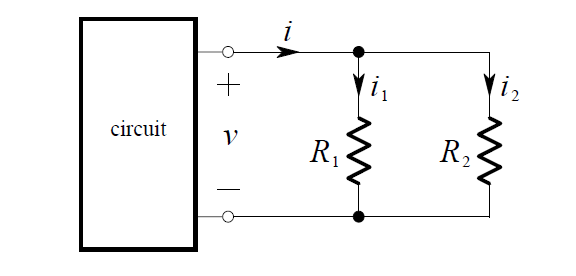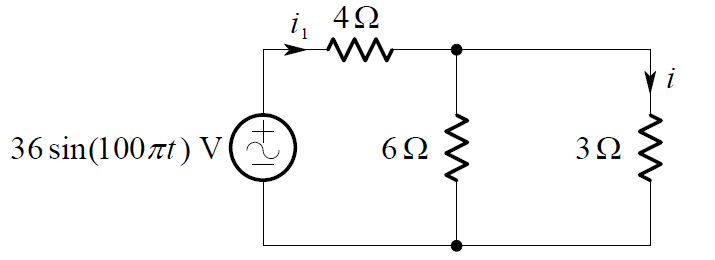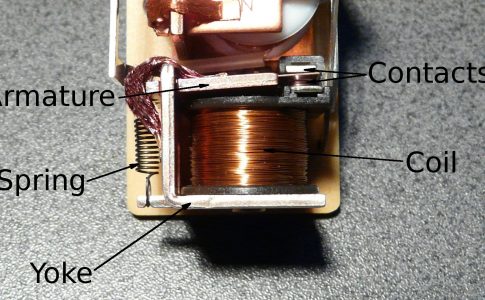It can be quite useful to determine how a current entering two parallel resistors “divides” between them.
Consider the circuit shown below:

We replace the parallel connection of R1 and R2 by its equivalent resistance.
Thus, Ohm’s Law gives:

By application of Ohm’s Law again, the current in R1 is i1 = v R1 and thus:

Similarly, the current in R2 is :

These equations describe how the current is divided between the resistors. Because of this, a pair of resistors in parallel is often called a current divider. Note that a larger amount of current will exist in the smaller resistor – thus current tends to take the path of least resistance!
Example:
We want to find the current i in the circuit below:

The total current delivered by the source is:

Therefore the desired current is:

